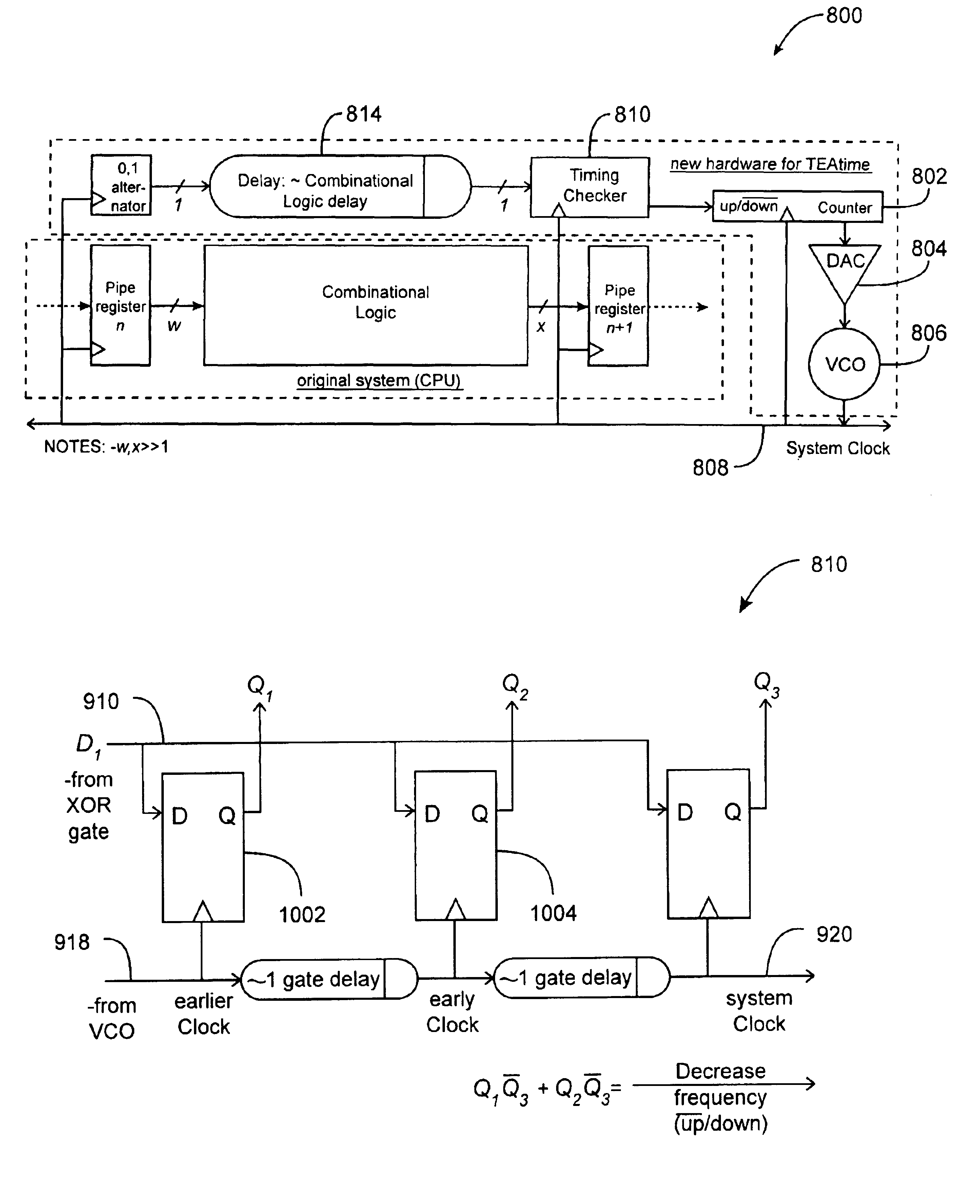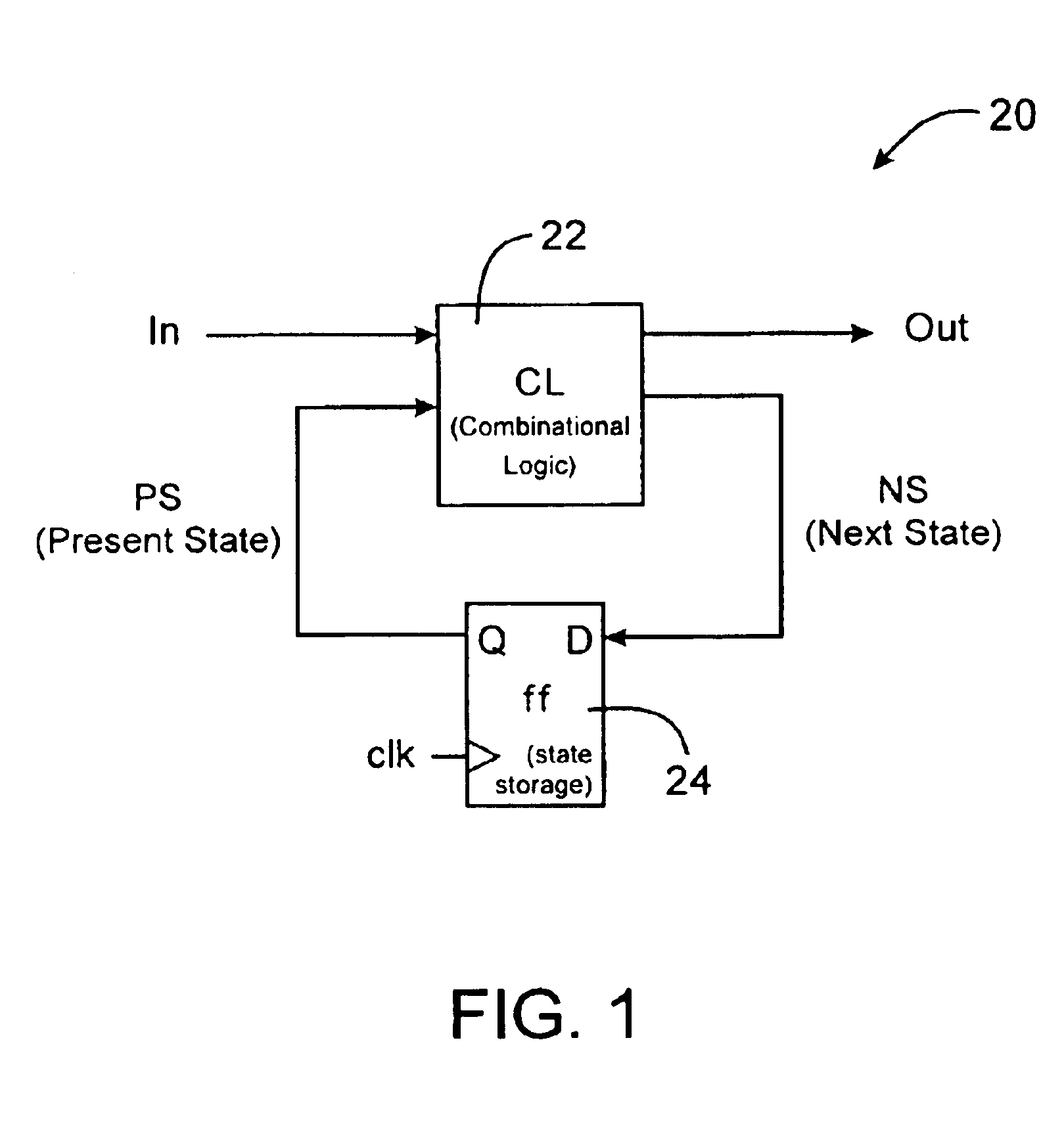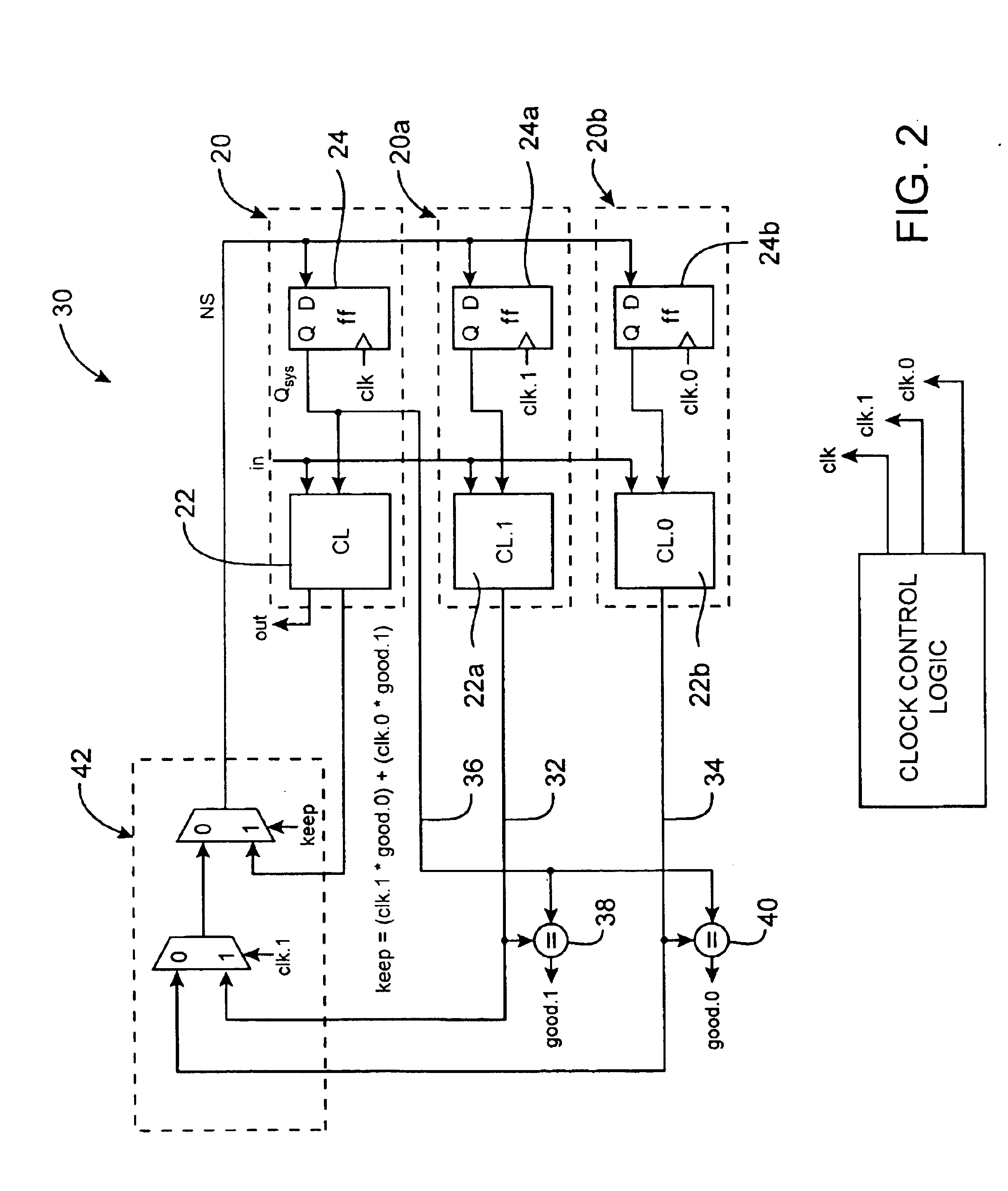System and method of digital system performance enhancement
a digital system and performance enhancement technology, applied in the field of digital electronic systems, can solve the problems of insufficient duration/period of clock, inability to model, design and verify asynchronous systems, and inability to achieve the performance of such a digital system. half or less than
- Summary
- Abstract
- Description
- Claims
- Application Information
AI Technical Summary
Benefits of technology
Problems solved by technology
Method used
Image
Examples
first embodiment
[0030]FIG. 2 illustrates a digital system 30 according to the present invention. The digital system 30 includes two copies 20a, 20b of a main digital synchronous system 20 illustrated in FIG. 1, wherein each of the copies 20a, 20b operates at half the speed of the main digital synchronous system 20. One of the copies replicates the results of the main digital synchronous system 20 in odd cycles, while the other copy replicates the results in even cycles. The two half-speed systems 20a, 20b are operated one main system cycle out-of-sync with each other. Both of the half-speed systems' 20a, 20b outputs on lines 32, 34 respectively are compared with the main system output on the line 36 in alternate cycles using comparators 38, 40. If there is a difference between the two outputs (e.g., between the signals on lines 32 and 36), an error is detected and selection logic 42 selects the output signal from the half-speed system, assuming of course the error was caused by the higher speed sys...
embodiment 70
[0044]FIG. 4 illustrates a first alternative embodiment 70 of the present invention. This embodiment may be realized at the gate and latch level or at the register level. The system illustrated in FIG. 4 has a hardware cost that increases at the same rate as the performance (e.g., about 2× hardware cost for 2× performance increase, while the power also increases by a factor of about two). This solution is also easier to build and does not increase the amount of logic (gate delay) in the critical path. This solution is applied at the functional level in a pipelined system. FIG. 5 illustrates a timing diagram for the first alternative embodiment system 70 illustrated in FIG. 4.
[0045]For the purposes of describing this embodiment, and certainly not by limitation, it is assumed that the system is pipelined. In a pipelined system (common in today's processors), the work of the original combinational logic is divided up into several sections / stages. Each stage does part of the work of the...
embodiment 100
[0055]FIG. 6 illustrates yet another embodiment 100 of the invention. Notably, the embodiment 100 illustrated in FIG. 6 realizes a 2× performance for less than a 2× increase in hardware cost, while power increases by a factor of four. A major feature of this embodiment is its applicability to all digital systems, via the general digital system model illustrated in FIG. 1.
[0056]Referring to FIG. 6, this embodiment is premised on creating a mini-version of a proportional pipe, but constructing the stages' combinational logic in a different manner. Assuming the original combinational logic block CL illustrated in FIG. 2 is split it into two equal-delay combinational logic sections CLa 102 and CLb 104 (i.e., we increase the pipelining by a factor of two). This allows the clock frequency to be doubled, and using a two-phase clocking system the implicit system frequency can be increased by another factor of two. However, since we only get a result every complete pass through the pipeline ...
PUM
 Login to View More
Login to View More Abstract
Description
Claims
Application Information
 Login to View More
Login to View More - R&D
- Intellectual Property
- Life Sciences
- Materials
- Tech Scout
- Unparalleled Data Quality
- Higher Quality Content
- 60% Fewer Hallucinations
Browse by: Latest US Patents, China's latest patents, Technical Efficacy Thesaurus, Application Domain, Technology Topic, Popular Technical Reports.
© 2025 PatSnap. All rights reserved.Legal|Privacy policy|Modern Slavery Act Transparency Statement|Sitemap|About US| Contact US: help@patsnap.com



